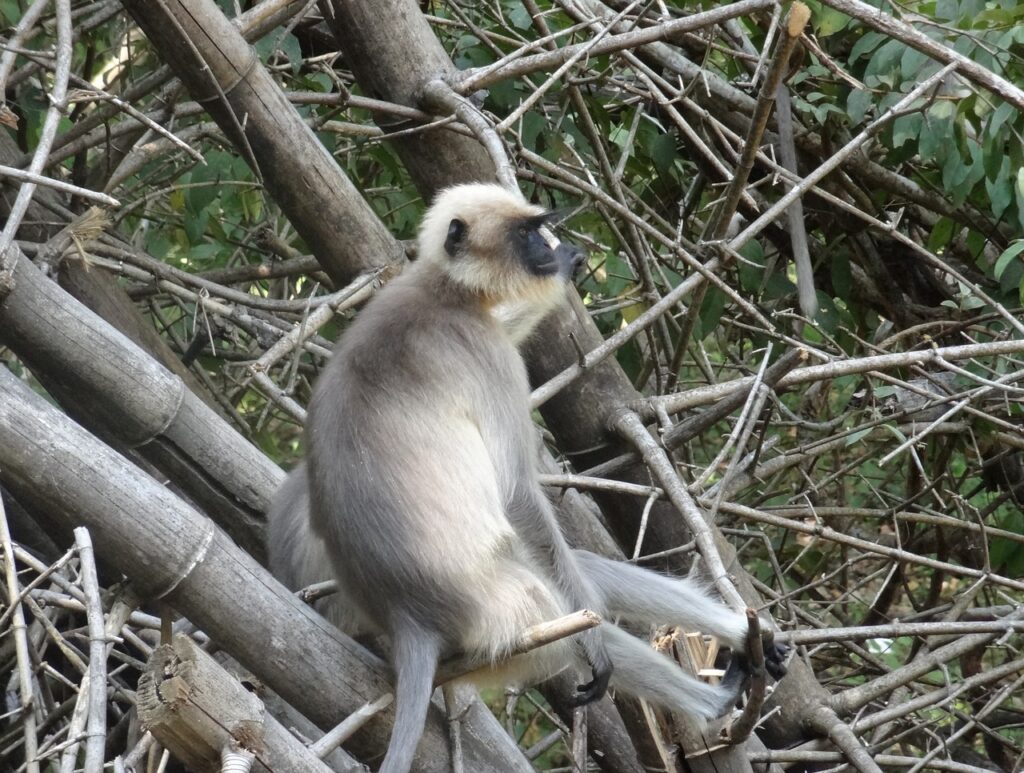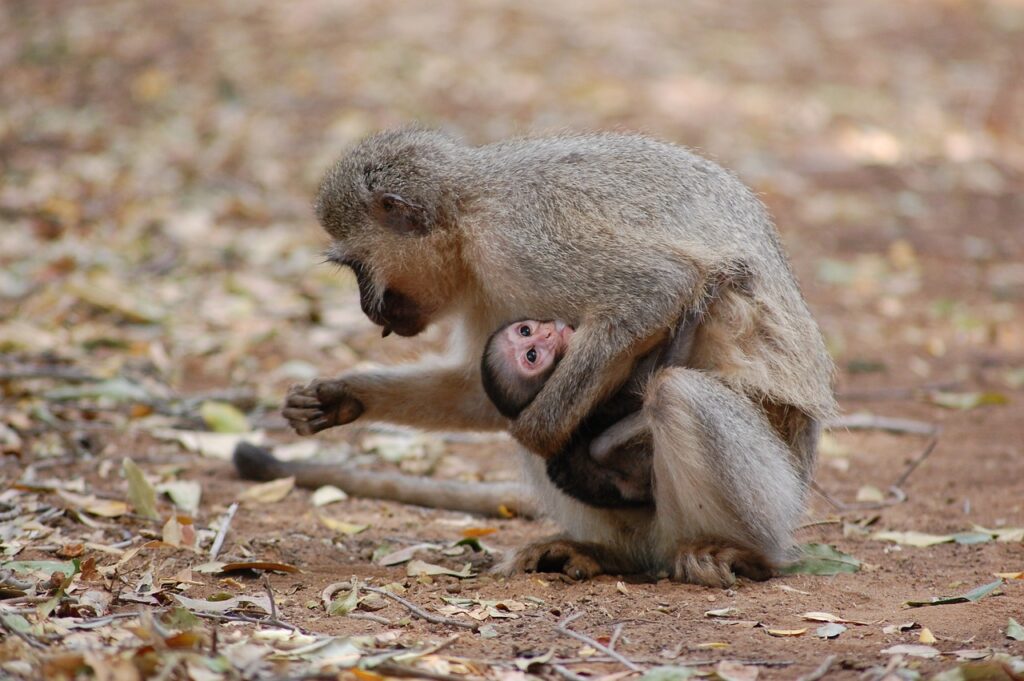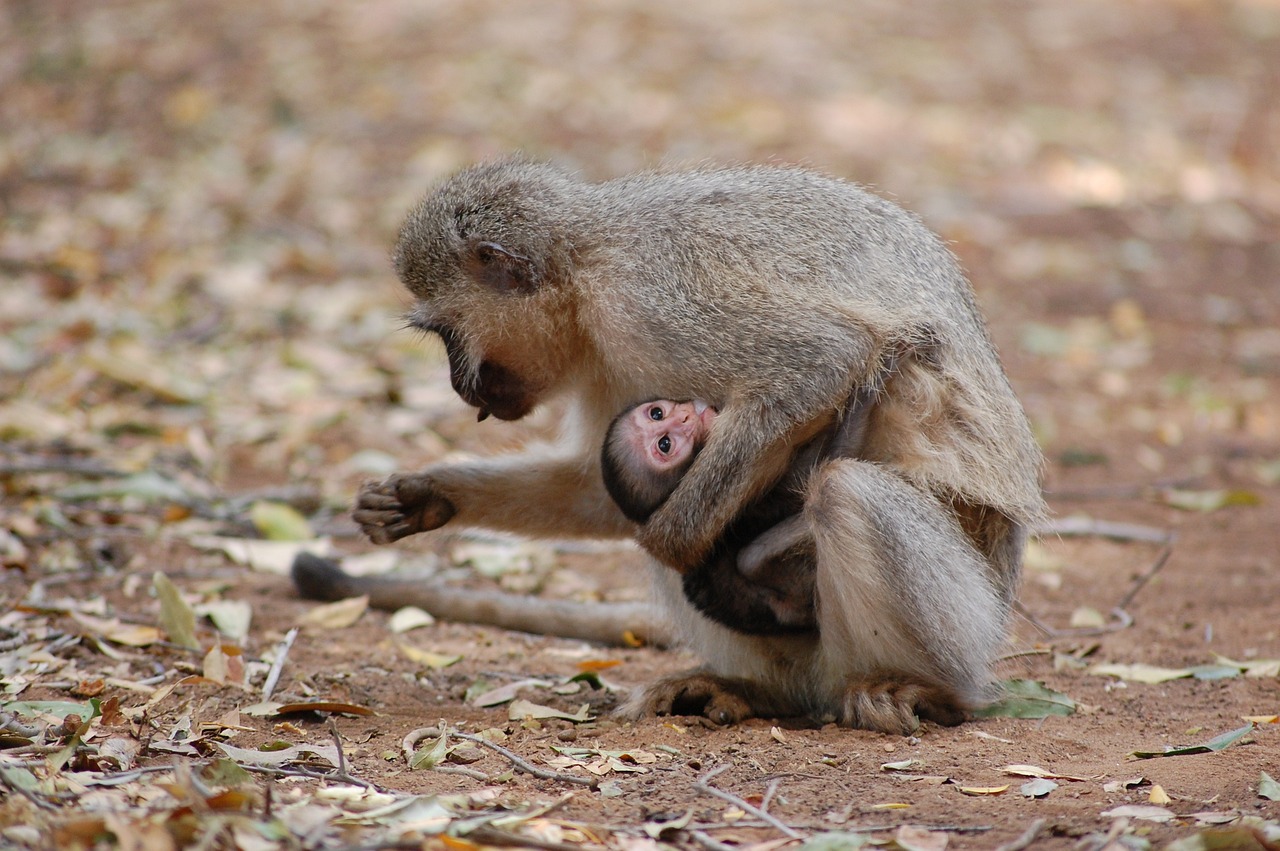Biodiversity, a term frequently tossed around in the realm of environmental science, refers to the incredible variety of life on our planet. From the tiniest microorganisms to the towering sequoia trees, every living organism plays a crucial role in maintaining a delicate balance within ecosystems worldwide. But what exactly does biodiversity entail? In essence, it encompasses the millions of different species that coexist on Earth, as well as the rich genetic variation within those species. Exploring the depths of biodiversity allows us to marvel at the wonders of nature’s interconnected web, understanding the intricate relationships between flora, fauna, and the environment they inhabit.

The concept of biodiversity
Biodiversity refers to the variety of living organisms, their genetic makeup, and the ecosystems they belong to. It encompasses all forms of life on Earth, from microscopic bacteria to towering trees, and from tiny insects to majestic mammals. Biodiversity is not only about individual species, but also the intricate web of interactions between different organisms and their environment.
Understanding the different components of biodiversity
Biodiversity is composed of various components that collectively contribute to the richness and complexity of ecosystems. Species diversity refers to the number and variety of different species within a given area. Genetic diversity, on the other hand, focuses on the variation within a species, encompassing the differences in traits and genetic makeup. Ecosystem diversity refers to the range of different habitats, such as forests, wetlands, and coral reefs, and the interactions between their biotic and abiotic components. Lastly, functional diversity emphasizes the roles and functions that different organisms play within ecosystems, such as pollination, nutrient cycling, and predation.
The significance of biodiversity in maintaining ecological harmony
Biodiversity plays a crucial role in maintaining the balance and functionality of ecosystems. Each component of biodiversity contributes in its own way to the overall health and stability of an ecosystem. Species diversity ensures that there are enough organisms performing specific roles, allowing ecosystems to adapt and respond to environmental changes. Genetic diversity within species enables populations to withstand diseases, adapt to changing conditions, and maintain overall resilience. Ecosystem diversity provides a range of habitats and niches, which support a wide array of organisms and ecological processes. Lastly, functional diversity ensures that ecosystems have the necessary interactions and processes required for survival and productivity.
Ecological benefits of biodiversity
Biodiversity is essential for the healthy functioning of ecosystems and the services they provide. It contributes to key ecological processes such as nutrient cycling, pollination, and decomposition. For example, bees and other pollinators play a crucial role in pollinating flowering plants, which, in turn, produce fruits and seeds crucial for the survival of many species, including humans. Biodiversity also helps regulate climate by absorbing carbon dioxide, preventing soil erosion, and purifying water bodies through filtration.
Economic benefits of biodiversity
Biodiversity is a valuable economic resource, providing a wide range of goods and services. Many industries directly rely on biodiversity for their products, such as timber, food, and medicines. For example, the pharmaceutical industry heavily depends on diverse plant and animal species for the development of new drugs and treatments. Biodiversity also contributes to tourism, attracting visitors to areas with unique and diverse ecosystems, generating economic opportunities for local communities.
Cultural and emotional benefits of biodiversity
Biodiversity holds great cultural and emotional significance for communities around the world. Many indigenous cultures have deep ancestral connections to specific landscapes and species, which are integral to their identity, spirituality, and traditional practices. Biodiversity also offers aesthetic and recreational values, providing opportunities for people to engage with nature, find solace, and experience a sense of wonder and inspiration.
Species diversity
Species diversity is a fundamental component of biodiversity and refers to the variety and abundance of different species within a given area. It includes both the number of species present and the evenness of their distribution. High species diversity indicates a healthy and robust ecosystem, capable of adapting to changes and maintaining ecological balance.
Genetic diversity
Genetic diversity refers to the variation within a specific species, encompassing the differences in genetic traits and characteristics among individuals. It plays a crucial role in the resilience and adaptability of populations, as well as their ability to withstand environmental stressors such as diseases, climate change, and habitat loss. Maintaining high levels of genetic diversity is essential for long-term species survival and healthy ecosystems.
Ecosystem diversity
Ecosystem diversity refers to the variety and abundance of different habitats and ecosystems within a region. It encompasses the different biotic (living) and abiotic (non-living) components of ecosystems, including plant and animal communities, soil types, climate patterns, and geological features. Ecosystem diversity is closely linked to species diversity, as different habitats support different sets of species adapted to specific conditions.
Functional diversity
Functional diversity focuses on the roles and functions that different organisms play within ecosystems. It refers to the variety and range of ecological processes and interactions, such as nutrient cycling, predation, pollination, and seed dispersal. Functional diversity is crucial for maintaining ecosystem stability, as it ensures the continuous availability of essential services and resources that support life.

Habitat loss and fragmentation
One of the greatest threats to biodiversity is habitat loss and fragmentation. Human activities such as deforestation, urbanization, and the conversion of natural habitats for agriculture or infrastructure result in the destruction and degradation of ecosystems. This leads to the displacement and extinction of many species, disrupting ecological processes and reducing biodiversity.
Climate change
Climate change poses a significant challenge to biodiversity conservation. Rising temperatures, changing weather patterns, and increased frequency of extreme events disrupt ecosystems and disrupt many species’ ability to survive and reproduce. Climate change can alter the timing of important ecological events, such as flowering and migration, leading to mismatches and decreased reproductive success.
Invasive species
Invasive species are non-native organisms introduced into an ecosystem that can have harmful effects on native species and habitats. These species often outcompete native species for resources, prey on native species, or disrupt natural ecological processes. Invasive species can reduce biodiversity and threaten the stability and functioning of ecosystems.
Pollution
Pollution, including air, water, and soil pollution, is a significant threat to biodiversity. Industrial activities, agriculture, and improper waste disposal introduce toxins and pollutants into the environment, affecting the health and survival of plants, animals, and ecosystems. Pollution can result in the loss of species, the degradation of habitats, and the disruption of ecological processes.
Overexploitation
Overexploitation refers to the excessive harvesting or extraction of natural resources beyond their sustainable limits. This includes activities such as overfishing, illegal hunting, and deforestation for timber. Overexploitation can lead to the depletion of species populations, the destruction of habitats, and the disruption of ecological balance.
Disease and epidemics
Disease outbreaks and epidemics can have severe impacts on biodiversity. Pathogens can spread rapidly among wildlife populations, causing mass mortality and reducing species numbers. Infectious diseases can also jump from animals to humans, posing significant risks to public health.
Protected areas and reserves
Protected areas and reserves play a crucial role in conserving biodiversity. These designated areas, such as national parks and wildlife sanctuaries, are managed to preserve natural ecosystems and protect vulnerable species and habitats from human activities. They provide crucial refuges for species to thrive and maintain ecological processes.
Sustainable land and water management
Sustainable land and water management practices are essential for preserving biodiversity. These practices aim to minimize the impacts of human activities on ecosystems by promoting responsible land use, reducing pollution, and restoring degraded habitats. Techniques such as agroforestry, sustainable forestry, and watershed management help safeguard biodiversity while meeting human needs.
Conservation of endangered species
The conservation of endangered species is a critical aspect of biodiversity conservation. Endangered species are those facing high risk of extinction in the wild due to factors such as habitat loss, overexploitation, and invasive species. Conservation efforts for endangered species often involve habitat restoration, captive breeding, reintroduction programs, and international collaborations.
Biodiversity-friendly practices in agriculture
Agriculture is a significant driver of biodiversity loss, but biodiversity-friendly practices can help mitigate these impacts. Agroecology, organic farming, and sustainable crop rotation minimize chemical inputs, promote soil health, and maintain biodiversity within agricultural landscapes. By integrating biodiversity into agricultural practices, farmers can increase productivity, enhance resilience, and provide habitat for beneficial organisms.

Education and awareness
Education and awareness are vital in promoting biodiversity conservation. By increasing our understanding of the value and importance of biodiversity, we can make informed choices and take action to protect it. Education programs, public campaigns, and the integration of biodiversity topics into school curricula are effective ways to raise awareness and foster a sense of responsibility towards biodiversity.
Definition and criteria for biodiversity hotspots
Biodiversity hotspots are regions with exceptionally high levels of species richness and endemism, meaning they are home to a large number of unique species found nowhere else on Earth. These hotspots are identified based on specific criteria, including the number of endemic species, the degree of habitat loss, and the level of threat. Hotspots are considered priority areas for conservation due to their high levels of biodiversity and the urgent need to protect them.
Significant biodiversity hotspots around the world
There are several significant biodiversity hotspots around the world, each with its own unique set of species and ecosystems. Some well-known hotspots include the Amazon rainforest in South America, the Coral Triangle in Southeast Asia, the Cape Floristic Region in South Africa, and the California Floristic Province in the United States. These hotspots showcase the incredible diversity of life on our planet and the urgent need to conserve these regions.
Conservation efforts in biodiversity hotspots
Conservation efforts in biodiversity hotspots are crucial for preserving the unique species and ecosystems found in these regions. It involves the establishment of protected areas, sustainable management practices, community engagement, and international collaborations. Conservation organizations and governments work together to develop strategies and initiatives to safeguard these invaluable hotspots for future generations.
Current rates of biodiversity loss
The current rates of biodiversity loss are alarming and unprecedented in human history. Scientists estimate that species are becoming extinct at a rate 1,000 times higher than the natural background extinction rate. The accelerating loss of biodiversity is mainly driven by human activities, such as habitat destruction, overexploitation, and climate change. Urgent action is needed to reverse this trend and preserve the Earth’s rich biodiversity.
Causes of species extinctions
Species extinctions are primarily caused by human activities that disrupt ecosystems and degrade habitats. Habitat loss and fragmentation are major drivers of species extinctions, as they leave species without suitable places to live and reproduce. Overexploitation, pollution, invasive species, and global climate change also contribute to the decline and loss of species.
Impacts of biodiversity loss on ecosystems and humanity
The loss of biodiversity has severe consequences for ecosystems and humanity. Ecologically, biodiversity loss disrupts key ecological processes, such as nutrient cycling, pollination, and natural pest control, which are essential for the functioning and stability of ecosystems. It can lead to the collapse of ecosystems, as well as the loss of ecosystem services that humans depend on, such as food, clean water, and climate regulation. Biodiversity loss also has cultural and emotional impacts, as the disappearance of unique species and habitats robs us of the wonder and beauty of the natural world.
Biodiversity as a foundation for sustainable development
Biodiversity is a critical foundation for sustainable development. Ecosystem services provided by biodiversity, such as food production, water purification, and climate regulation, are essential for human well-being and economic progress. By prioritizing and integrating biodiversity conservation into development policies and practices, we can ensure the long-term sustainability of our planet and its resources.
Integrating biodiversity conservation into policies and practices
Integrating biodiversity conservation into policies and practices is crucial for sustainable development. This involves considering the impacts of development projects on biodiversity, assessing biodiversity risks and opportunities, and incorporating biodiversity goals into planning and decision-making processes. By mainstreaming biodiversity into various sectors, such as agriculture, energy, and infrastructure, we can strike a balance between development and biodiversity conservation.
The role of international agreements and organizations
International agreements and organizations play a vital role in biodiversity conservation. The United Nations Convention on Biological Diversity (CBD) is an international treaty that aims to promote the conservation and sustainable use of biodiversity. It provides a framework for cooperation among nations, sets targets for biodiversity conservation, and encourages the sharing of knowledge and resources. Organizations such as the International Union for Conservation of Nature (IUCN) and the World Wildlife Fund (WWF) also work towards biodiversity conservation through research, advocacy, and on-the-ground projects.
The importance of biodiversity for human health
Biodiversity is crucial for human health and well-being. Many medicines and therapeutic compounds are derived from diverse plant and animal species. Traditional medicine systems around the world rely on biodiversity to provide remedies for various ailments. Biodiversity also supports the development of new drugs and treatments by serving as a vast genetic library for researchers.
Medicinal value of biodiversity
Biodiversity has immense medicinal value. Plants, fungi, and marine organisms are rich sources of natural compounds with therapeutic properties. For example, the rosy periwinkle plant, native to Madagascar, produces alkaloids used in the treatment of childhood leukemia. Biodiversity also plays a vital role in traditional medicine systems, providing remedies for a wide range of health conditions.
Impacts of biodiversity loss on public health
The loss of biodiversity can have significant impacts on public health. Disruptions in ecosystems and the loss of habitat can lead to increased contact between humans and disease-carrying animals, increasing the risk of disease transmission. Furthermore, the loss of biodiversity can reduce the availability of nutritious food sources and exacerbate food insecurity and malnutrition. Protecting biodiversity is essential for safeguarding public health.
Challenges and opportunities for biodiversity conservation
Biodiversity conservation faces numerous challenges, but there are also promising opportunities for positive change. One of the main challenges is the need to balance conservation with other competing priorities, such as economic development and poverty alleviation. However, by recognizing the value of biodiversity and the crucial role it plays in our well-being, we can find ways to integrate biodiversity into various sectors and stimulate sustainable economic growth.
Promising initiatives and solutions
There are many promising initiatives and solutions being implemented to conserve biodiversity. The establishment of protected areas, community-based conservation projects, and sustainable land management practices are effective approaches in preserving biodiversity. Innovative techniques, such as captive breeding and assisted migration, are also being used to save endangered species and restore degraded habitats. Additionally, advancements in technology and monitoring systems are helping track changes in biodiversity and inform conservation efforts.
The role of individuals in preserving biodiversity
Every individual has a role to play in preserving biodiversity. Simple actions, such as reducing waste, conserving energy, and supporting sustainable products, can have a positive impact on the environment. By making conscious choices in our daily lives and advocating for biodiversity conservation, we can contribute to a more sustainable and biodiverse future for all.




